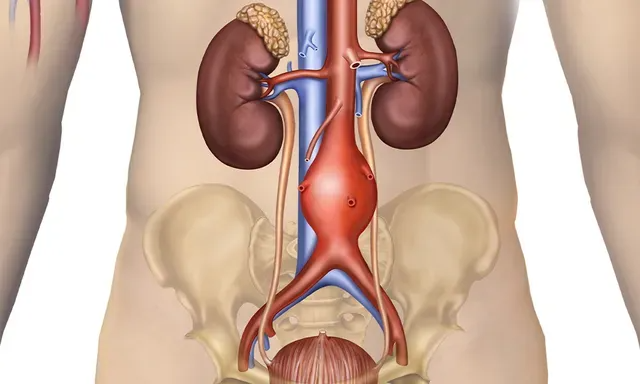Abdominal Aortic Aneurysm (AAA)
Every year in the United States, about 200,000 people are diagnosed with an abdominal aortic aneurysm (AAA), a balloon-like swelling of the main artery that supplies blood to the lower body. Left undetected and untreated, an AAA can rupture and cause life-threatening bleeding. Vascular surgeons, Drs. Danón Garrido, Justin Manley and their first-rate team at Advanced Vascular & Vein Associates in Flowood, Mississippi, offer comprehensive care for patients with AAA from the Greater Jackson area. Call today or book an appointment online any time.

Abdominal Aortic Aneurysm (AAA) Q & A
A weakened, swollen area in the wall of any artery is called an aneurysm. When an aneurysm affects the lower portion of your aorta, it’s called an abdominal aortic aneurysm (AAA).
Your aorta is the large artery that carries oxygen-rich blood from the left ventricle of your heart to your body. It begins at your heart’s aortic valve, runs through the center of your chest, and extends down into your abdomen. It’s the main artery that supplies blood to your belly, pelvis, and legs.
Like any aneurysm, an AAA affects blood flow and carries a risk of rupturing (breaking open) and hemorrhaging (bleeding severely). A rupture could lead to internal bleeding that may be life-threatening.
Although an aneurysm can occur anywhere along the aorta, most aortic aneurysms occur in the portion of the vessel that’s in the abdomen. Anything that damages or weakens the aorta wall can set the stage for aneurysm to develop. This includes:
- Arterial narrowing (atherosclerosis)
- Peripheral artery disease (PAD)
- Untreated cardiovascular disease
- High blood pressure (hypertension)
- Vasculitis (blood vessel inflammation)
- Abdominal trauma from an accident
Besides disease damage or physical trauma, several other risk factors can increase your chances of developing AAA. These include:
- Tobacco use
- Older age
- Male gender
- Being white
- Family history
About 90% of people who develop an AAA have a history of smoking cigarettes. Along with male gender and older age, tobacco use is such a major risk factor for AAA that most doctors recommend a one-time abdominal ultrasound to screen for an AAA in men aged 65 or older who are current or former smokers.
Most AAAs develop slowly, often over many years. They also usually develop silently, meaning they don’t cause any symptoms or red-flag warning signs until they’re close to rupturing.
When an AAA is close to breaking open, you may experience continuous lower back or leg pain, abdominal pain that doesn’t abate, and a pulsing sensation in your abdomen
If an AAA expands rapidly, breaks open, or leaks blood within the vessel wall (aortic dissection), these intense symptoms may come on rapidly:
- Severe lower back or belly pain
- Dizziness, fainting, or shock
- Rapid heart rate; shortness of breath
- Nausea and vomiting; clammy skin
These symptoms are a sign of a medical emergency that requires immediate care.
AAA rupture is the 15th-leading cause of death in the United States and the 10th-leading cause of death among men age 55 and older. Early diagnosis and intervention are key to avoiding the very serious, life-threatening risks of AAA.
Mild, early-stage AAAs are often diagnosed by chance; if you have any of the major risk factors for AAA — especially if you have several — it’s a good idea to have a diagnostic screening test.
Smaller AAAs may hold steady through lifestyle changes like smoking cessation, stress control, daily exercise, and cholesterol and blood pressure management. Regular monitoring can check to see if the aneurysm is growing larger.
Surgical repair is the treatment solution for larger AAAs or any that show signs of impending rupture. The team at Advanced Vascular & Vein Associates may use open surgery to repair an AAA with a graft, or minimally invasive endovascular aneurysm repair (EVAR) surgery to reinforce the vessel with an expandable stent.
To learn about the treatment options for AAA at Advanced Vascular & Vein Associates, call the office, or book an appointment online today.
